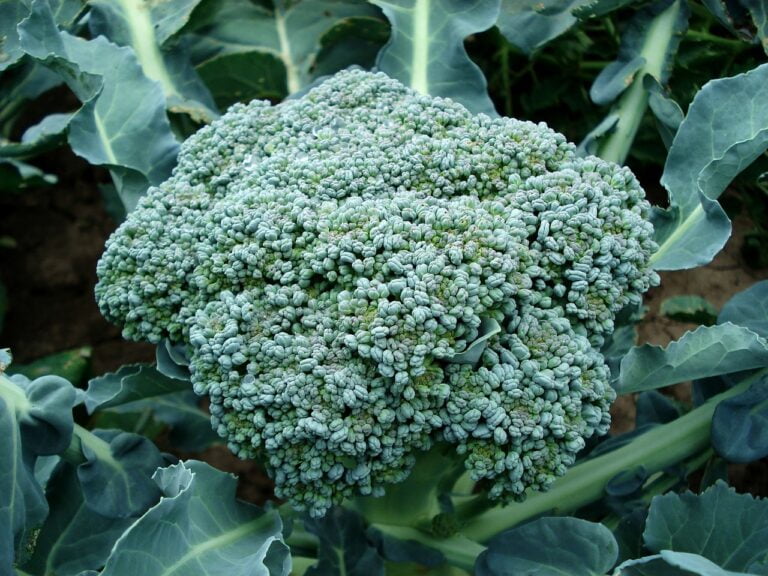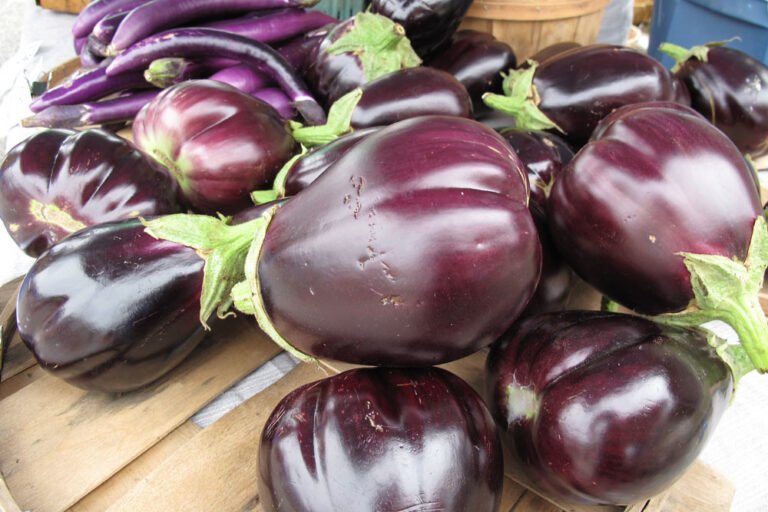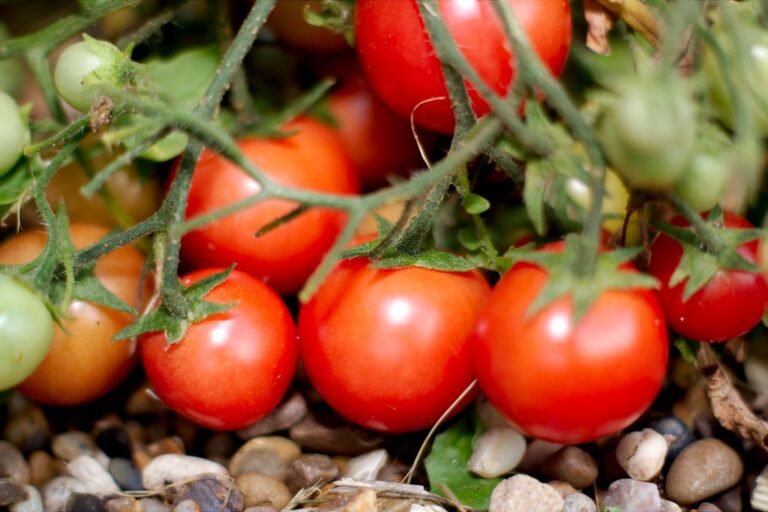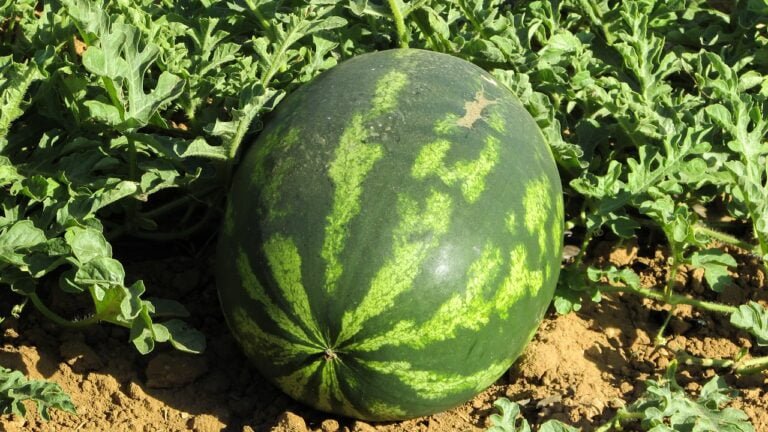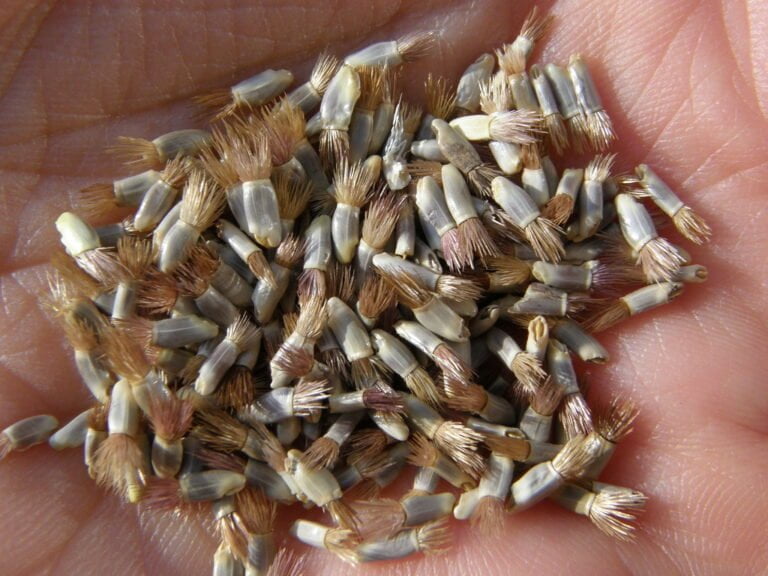Guide to Growing Cherry Tomatoes in Pots
Growing cherry tomatoes in pots requires determinate varieties for compact growth, or indeterminate for continuous harvest. Opt for containers at least 14 inches wide to accommodate root spread, with 20-inch pots offering more stability. Improve soil with peat moss and perlite for aeration and drainage, avoiding garden soil. Support plants with cages or bamboo poles, securing branches with Velcro tape. Aim for 6-8 hours of sunlight daily, watering consistently but not excessively. For a successful harvest, balance light exposure and hydration. Start strong and explore our tips for ripe cherry tomatoes.
Determinate Vs. Indeterminate Tomatoes
When choosing between determinate and indeterminate tomatoes for container gardening, it is essential to understand the key differences in their growth habits and fruit production. Cherry tomatoes, a favorite among many gardeners, come in both determinate and indeterminate varieties. Determinate tomatoes, such as the Tiny Tim or Husky Cherry Red, have a specific growth cycle and produce fruit all at once. These tomatoes are smaller in size and are ideal for container gardening due to their compact nature. On the other hand, indeterminate cherry tomato varieties like Sweet 100 or Sungold will continuously produce fruit throughout the growing season.
In a container gardening setting, determinate tomatoes are more manageable as they stay relatively compact and do not require extensive staking or pruning. They are excellent for those who have limited space but still want to enjoy fresh cherry tomatoes. Indeterminate tomatoes, while needing more support due to their potentially tall growth, offer a longer harvest window and a continuous supply of delicious cherry tomatoes. By growing both determinate and indeterminate cherry tomatoes, you can ensure a steady supply of fresh produce from your container garden. Consider your space, support options, and desired harvest period when selecting the right tomato plants for your pots.
Selecting the Right Container Size
For ideal growth of cherry tomatoes, selecting a container size of at least 14 inches wide is recommended. Cherry tomato plants require ample space for their roots to spread and establish a strong foundation for growth. It is advised to choose containers with a soil capacity of around 5 gallons to support healthy root development. Ensuring that the container has proper drainage holes is essential to prevent waterlogging, which can lead to root rot and other issues.
While a 14-inch wide container is the minimum size for cherry tomato plants, larger pots, ideally around 20 inches wide, can offer even more space for root expansion and stability. This additional space allows the roots to access more nutrients and water, promoting healthier plant growth and higher yields. Additionally, using grow bags is a convenient option that provides adequate space for cherry tomato plants while offering the flexibility to move the containers as needed for sunlight or maintenance.
Selecting the right container size is a critical step in successfully growing cherry tomatoes in pots. By providing sufficient space for root development and ensuring proper drainage, you can create an optimal environment for your plants to thrive and produce bountiful harvests.
Soil Amendments and Preparation
To improve the growth of cherry tomatoes in pots, incorporating soil amendments like peat moss and perlite is essential for enhancing aeration and preventing soil compaction. When preparing the potting mix, it is important to use a quality potting mix specifically designed for container gardening. Avoid using garden soil in pots as it can lead to issues such as pests and weed contamination. By adding worm castings or manure to the potting mix, you can greatly improve the soil quality for your cherry tomatoes.
Soil amendments play an important role in promoting healthy cherry tomato growth in containers. Peat moss aids in retaining moisture and improving soil structure, while perlite enhances drainage and aeration. These amendments work together to create an ideal environment for the cherry tomatoes’ roots to thrive. Additionally, incorporating worm castings or manure adds essential nutrients to the soil, promoting robust growth and fruit development.
Providing Proper Support for Plants
To support cherry tomato plants effectively, using tomato cages or bamboo poles is vital to prevent branch breakage and guarantee a successful harvest. When supporting cherry tomato plants, there are a few key strategies to keep in mind:
- Tomato Cages: These are ideal support structures for cherry tomato plants. They provide stability and prevent the branches from bending or breaking, especially as the plant grows heavier with fruit.
- Caging at Planting Time: Making sure the plants are caged early on helps establish a good support system from the start. This initial support is essential for the plants as they begin to grow and produce tomatoes.
- Bamboo Poles: Another effective option for supporting cherry tomato plants is using bamboo poles. These poles can be inserted into the soil near the plant and gently tied to the main stem for added stability.
- Velcro Garden Tape: This adjustable and gentle tape is perfect for securing branches to support poles. It allows for flexibility as the plant grows and makes it easy to adjust the ties without harming the plant.
- Preventing Branch Breakage: Providing proper support with tomato cages or bamboo poles helps prevent branch breakage and ensures that the plant can continue to thrive and produce a bountiful harvest.
Ensuring Adequate Sunlight and Watering
Ensuring cherry tomato plants receive ample sunlight and consistent watering is essential for their healthy growth and abundant fruit production. Cherry tomatoes thrive with a minimum of 6 hours of sunlight daily, but to truly optimize growth, aim for spots with at least 8 hours of sunlight each day. Sunlight plays a critical role in the development and fruit production of cherry tomatoes. The quality and quantity of your harvest directly correlate with the amount of sunlight your plants receive.
When it comes to watering container-grown cherry tomatoes, consistency is key. Daily watering is generally recommended to maintain ideal hydration levels. These plants have limited access to water compared to those in the ground, so it’s important to monitor soil moisture regularly. The goal is to keep the soil consistently moist but not waterlogged.
Proper watering practices ensure that the cherry tomatoes receive the hydration they need to grow and produce fruit successfully. Remember, the balance between sunlight exposure and adequate watering will contribute significantly to the overall health and productivity of your container-grown cherry tomato plants.
Harvesting Ripe Cherry Tomatoes
When harvesting ripe cherry tomatoes, using scissors is essential to avoid damaging the plant. To guarantee a successful cherry tomato harvest, it’s important to pay attention to the following key points:
- Ripe cherry tomatoes: Look for tomatoes that are fully colored and have a bright, vibrant hue. This indicates that they are ready for picking.
- Texture check: Ripe cherry tomatoes should be firm to the touch but give slightly when gently squeezed. This balance indicates ideal ripeness for harvesting.
- Timely harvesting: Regularly check your cherry tomato plants for ripe fruits. Harvesting at the right time ensures the best flavor and texture in your tomatoes.
- Storage: After harvesting, store your cherry tomatoes at room temperature. This helps maintain their flavor and texture for longer periods.
- Avoid squeezing: When picking cherry tomatoes, handle them carefully to prevent bruising. Using scissors for a clean cut minimizes damage to the plant and the fruit.


